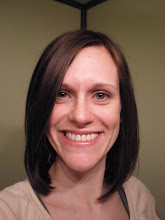 (Chapter 2, Box 8 Action)
(Chapter 2, Box 8 Action)Saturday, January 31st, 2009
2:00 p.m. 27-degrees and sunny
Fort Wayne to Angola, IN
Outskirts of Angola: There are dense trees covered in a thick layer of white snow. The roads are hilly and winding. People are out on the lakes ice fishing and corn stalks poke through the snowcovered fields.
Crooked Lake: 290West to West Shady Side Road. Mobile homes and McMansions sit side-by -side. There are no kids, no traffic, no people outside, just bare trees with golden brown clumps of leaves fluttering in the wind. The roads continue to snake along the lake and many snowmobilers are darting over the ice in patterns.
Lake James: Paulty Town East: There are mobile homes and a church with a health center. Between the crowded homes there is an island upon which sits one house. The further we drive, the bigger and newer the houses are. Sowles Bay: There are lots of trees and a few pricy homes and there are many tiny cottages clumped together. After a patch of trees we come upon many more expensive houses and a marina. Other neighborhoods: Red Sand Beach (where we see a deer), Glen Eden Springs (up on a hill), and Cruscoe Point (private).
I haven't been back to Angola since I left it nearly five years ago. It is bright and bitterly cold. It's weird how much my memory of this place has been erased by the events of the past five years.
What surprised me: I was surprised by how big the Lake James area is and how, during the entire time I lived on Crooked Lake, I had never once driven the short distance to Lake James, even by accident! I also saw more deer than people on the drive around the lake. It appeared as if no one was even living out there.
What intrigued me: In Fort Wayne, most neighborhoods are clearly divided into lower income, higher income, and ridiculously huge income areas. However, on Lake James, all of these housing types seemed to be intermixed, especially in Paulty Town. How do these different types of lake people coexist? How do the wealthy people not look at the patchwork mobile homes in disgust, and how do the cottage dwellers not resent the three-story mansions that now block their lake view? What a mystery.
What disturbed me: Honestly, I was disturbed by all the mansions. They looked so out of place on the lake. Yes, some of the smaller dwellings were old, some had definitely seen better days, but when I think of lakes, I think cabins and cottages, not giant estates. Especially giant estates that sit unused for eight months out of the year. Privatizing such large parts of a natural resource seems ridiculous to me.

"What intrigued me: In Fort Wayne, most neighborhoods are clearly divided into lower income, higher income, and ridiculously huge income areas. However, on Lake James, all of these housing types seemed to be intermixed, especially in Paulty Town. How do these different types of lake people coexist? How do the wealthy people not look at the patchwork mobile homes in disgust, and how do the cottage dwellers not resent the three-story mansions that now block their lake view? What a mystery.
ReplyDeleteWhat disturbed me: Honestly, I was disturbed by all the mansions. They looked so out of place on the lake. Yes, some of the smaller dwellings were old, some had definitely seen better days, but when I think of lakes, I think cabins and cottages, not giant estates. Especially giant estates that sit unused for eight months out of the year. Privatizing such large parts of a natural resource seems ridiculous to me. "
This post was *great* and I hope you'll share more of them (provided you've opted to be my participant.
Anyway, the above section makes so much sense to me as a way of rationalizing the text we're compiling. One of the "typical" points of lake life is the intermingling of lots of socioeconomic classes of people. But the McMansions are the impetus for LJHP to put together this text. Your way of describing it here helps me help them. :)